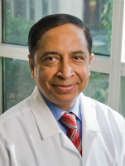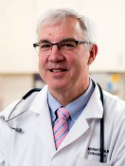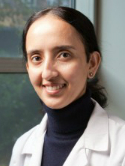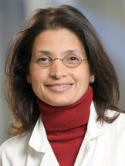RAI thyroid bed uptake after total thyroidectomy: A novel SPECT-CT anatomic classification system Journal Article
| Authors: | Zeuren, R.; Biagini, A.; Grewal, R. K.; Randolph, G. W.; Kamani, D.; Sabra, M. M.; Shaha, A. R.; Tuttle, R. M. |
| Article Title: | RAI thyroid bed uptake after total thyroidectomy: A novel SPECT-CT anatomic classification system |
| Abstract: | Objective Recent, more selective use of radioactive iodine (RAI) has led to reevaluation of the clinical importance of achieving complete total thyroidectomy with minimal residual normal thyroid tissue. We utilize the improved localization by post-RAI remnant ablation, single photon emission computerized tomography-computed tomography (SPECT-CT) to define specific anatomic sites of residual RAI-uptake foci after total thyroidectomy for differentiated thyroid cancer (DTC) and to provide a novel classification system relating uptake to thyroid anatomy and preservation of adjacent neural structures. Study Design Retrospective. Method Radioactive iodine-uptake foci in thyroid bed were localized by SPECT/CT imaging at the time of RAI remnant ablation in 141 DTC patients undergoing total thyroidectomy. Results Minimal residual RAI uptake (median 0.32% at 24 hours) in the thyroid bed was detected by diagnostic planar whole body scans in 93% and by posttherapy SPECT/CT imaging in 99% of subjects. Discrete RAI uptake foci were identified on the SPECT/CT imaging at Berry's ligament (87%), at superior thyroid poles (79%), in paratracheal-lobar regions (67%), in isthmus-region (54%), and in pyramidal lobe (46%). Despite the residual foci, the nonstimulated thyroglobulin (Tg) prior to remnant ablation (with a median thyroid-stimulating hormone of 0.36 m IU/L) was < 0.6 ng/mL in 53% and < 1 ng/mL in 73% of cases. Conclusion After extracapsular total thyroidectomy, highly sensitive detection tools identify microscopic residual RAI avid foci in thyroid bed in the majority of patients. These foci can be classified as 1) neural-related and 2) capsule-related. These common residual foci have no relationship to postoperative Tg, suggesting that attempts at radical removal of thyroid tissue in these locations may not be warranted. © 2015 The American Laryngological, Rhinological and Otological Society, Inc. |
| Keywords: | adult; aged; major clinical study; postoperative period; cancer patient; computer assisted tomography; classification; retrospective study; radioactive iodine; minimal residual disease; thyroidectomy; thyroid cancer; thyroglobulin; single photon emission computer tomography; surgical anatomy; recombinant thyrotropin; whole body scintiscanning; remnant ablation; differentiated thyroid cancer; subtotal thyroidectomy; iodine 123; human; male; female; priority journal; article; ct-spect scanner; postoperative tg; rra |
| Journal Title: | Laryngoscope |
| Volume: | 125 |
| Issue: | 10 |
| ISSN: | 0023-852X |
| Publisher: | Wiley Blackwell |
| Date Published: | 2015-10-01 |
| Start Page: | 2417 |
| End Page: | 2424 |
| Language: | English |
| DOI: | 10.1002/lary.25295 |
| PROVIDER: | scopus |
| PUBMED: | 25891354 |
| PMCID: | PMC4985716 |
| DOI/URL: | |
| Notes: | Export Date: 2 November 2015 -- Source: Scopus |
Altmetric
Citation Impact
BMJ Impact Analytics
Related MSK Work









